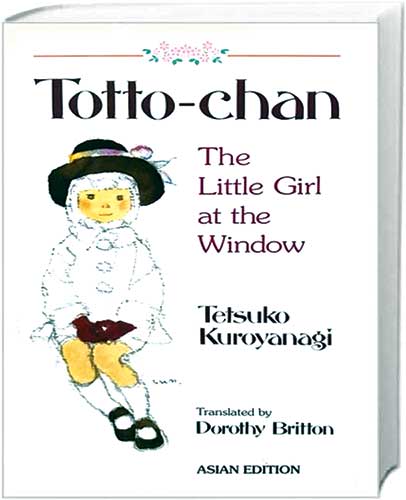Aruna Sankaranarayanan
Until now, in this column, I have covered non-fiction books written mainly by researchers and academics that I felt would resonate with teachers. This time, I review a delightful account of a little Japanese school girl whose life is turned around by a perceptive mother and an extraordinary principal who runs an unconventional school built on a bedrock of empathy. In Totto-chan: The Little Girl at the Window, as author, Tetsuko Kuroyanagi, recounts her own academic journey through the character of Totto-chan, simple nuggets of psychological wisdom shine through.
Totto-chan is expelled from her school in first-grade. Her misdeeds at the previous school include opening and shutting her desk repeatedly, standing at the classroom window and inviting a street musician to perform and drawing on her desk with a crayon. While Totto-chan does not mean to cause trouble, the school perceives her actions differently. So, the parent is asked to take the child out of school.
However, her mother does not reveal this fact to her daughter, rightly fearing that the child is too young to comprehend why this has happened. Unlike the typical parent, neither does her mother berate Totto-chan for ‘misbehaving’ in the previous school. Instead, she simply asks her daughter if she would like to go to a “new school”.
After an interview with the headmaster of Tomoe Gakuen, where he listens attentively as Totto-chan prattles on and on, he tells her that she is now a “pupil of this school,” making her feel part and parcel of the establishment. On the first day of classes, Totto-chan is surprised to discover that the school doesn’t follow a timetable with one period leading to the next. Instead, the teacher writes down all the “problems and questions in the subjects to be studied that day” and asks the pupils to pick the one they would like to work on. This allows the teacher to notice what subjects interest each student and how each one thinks.

Once the academic tasks are finished in the morning, children are encouraged to take an afternoon walk along with a teacher, who points out and discusses various flora and fauna they encounter. Besides getting exercise and spending time in nature, children learn about the local ecology and environment through these sojourns.
The principal is wary of conventional education that stresses the 3 Rs without necessarily honing a child’s “sensual perception of nature”. Additionally, mainstream schooling doesn’t draw on children’s inherent sense of awe and wonder to propel them to seek further. “Having eyes, but not seeing beauty” and “having hearts that are never moved” are what worries this compassionate principal.
Further, the headmaster is attuned to individual needs of children, both physical and psychological. The school’s pupils include a child crippled by polio and a boy with bow-legs. The school’s sports day hosts events such that children who are differently-abled can also excel. During a lunchtime assembly, a child who fears speaking in front of a group, is gently and reassuringly coaxed to speak up, till he musters the courage to string a few words and then a few sentences together.
In Tomoe Gakuen’s nurturing and conducive atmosphere, Totto-chan blossoms into a confident young student. The headmaster’s reassurance, “You’re a good girl, you know” turns into a self-fulfilling prophecy as Totto-chan strives to live up to his words. Unfortunately, Tomoe Gakuen is razed to the ground as bombs rain down the school during World War II.
In the Postscript, the author states that the book is based entirely on events “that really happened”. She is also grateful to have encountered such an empathetic school with a visionary principal who literally turned her life around. If not for Tomoe, Kuroyanagi muses that she would have probably been labeled “a bad girl”. In today’s parlance, the child may have been diagnosed as having “attention-deficit hyperactivity disorder”. However, as this book illustrates, these labels are not necessarily a feature of the child alone but result from an interplay of individual and environmental factors.
When the same child is placed in an open, sensitive and accepting environment, some of her very weaknesses morph into strengths. Many traits may be construed as strengths or foibles depending on contextual factors. While Totto-chan was seen as talkative, impulsive and disruptive in her former school, she becomes expressive, spontaneous and confident in the nurturing atmosphere of the new school.
The book also underscores the importance of not boxing children with negative labels. By believing that all children may grow into the best versions of themselves and giving them adequate time and space, both physical and psychological, to do so, children often surprise and surpass our expectations.
The writer is the author of Zero Limits: Things Every 20-Something Should Know. She blogs at www.arunasankaranarayanan.com.
